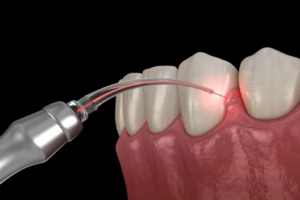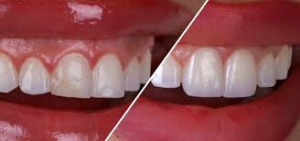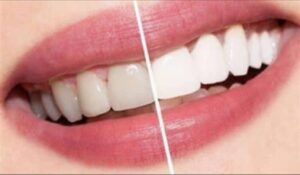الـواحــة الطلابيــة للجـامعــة الوطنيــة الخـاصــة
Student Oasis of Al-Wataniya Private University
Research seminar title: Lasers in dentistry
Faculty of Dentistry research seminars

Student preparation
abd almohsen mohammad alkhadle

Student preparation
sidra alissa

Student preparation
anas ftrawi

Student preparation
sanaa ashmeh
Supervision:
Dr. Alaa Nassif
- Faculty of Dentistry research seminars
- Dentistry
- Pharmacy
- Engineering (informatics and communications)
- Civil engineering
- Architecture and urban planning
- Administrative and financial sciences
summary
The laser was first used in dentistry in 1960 , the first device specifically made in dentistry in 1990 , and its use in dentistry has evolved significantly over time.

What is a laser?
A laser is a device that emits tight and intense beams of light energy, and when the laser comes into contact with the tissue it causes a reaction , where light due to the laser can remove, vaporize, or shape the tissue. The commonly used laser currently operates in a gaseous medium and is called a CO2 gas laser, which is the most advanced and efficient laser.
Benefits of this laser include:
- Lack of haemorrhage during surgeries and lack of destruction of tissues and the ability to reduce infection after operations and reduce the period of wound healing.
- Removal of benign tumors without the need in many cases for local anesthesia or suturing of the wound.
- Removal of some Tissue Soft Epulis on one or both jaws to aid in the use of dentures, as well as removal of swollen tissue due to certain medications.
- Relieve pain and inflammation in the temporal joint.
- Smile gummy : Lasers are also used to reshape gum tissue, expose larger portions of healthy teeth, and improve the shape of the smile in individuals whose gums appear when they smile. Partially removing the partially covering tissue of the erupting wisdom tooth.
- Lengthening Crown : by removing simple parts of the gums so that the dentist can prepare the appropriate formula for the teeth .

- Gingivoplasty by removing melanotic pigmentation and modifying the shape of the gums and trimming them, where a laser is used to remove the outer layer of gum tissue (reflective decolorization), detecting the open basic tissue and helping to cauterize the tissue during its removal.

There may be some temporary swelling, discomfort or sensitivity after treatment and dark gums may come back
- Treatment of gum cysts and treatment of inflamed tooth root canals, and reducing the numbers of bacteria in the gum pocket.

- Teeth whitening (leaser Teeth Whiteening): It used to be required to put a whitening mold on the teeth, which contains Hydrogen Peroxide, and with the advent of lasers, it became easier to deal with different age stages because lasers do not lead to heating of the tooth or sensitivity of the teeth
- The teeth whitening process takes about an hour and a half and the color of the tooth is measured electrically before treatment for the final comparison and a Diode leaser is used.
- The use of laser is not recommended for children under fifteen years of age for physiologically and anatomically incomplete growth, its use during pregnancy and people with allergies to cold, hot, hot and sweet .
Symptoms:
- Tooth sensitivity
- Sensitivity or inflammation of the gums to the substance used in bleaching
- Gastritis if the substance used for bleaching is swallowed

Types of lasers in dentistry :
- Gas
- Argondolor Glucamate
- Carbon Dioxide
2. Asker :
- Dyes
3.solid:
- Nd :YAG
- Erbium : Yttrium Aluminium Garnet (YAG )
- Semiconductor Diode
- hybrid silicone laser
Excimers .4:
- Purple – Fluoride
- Krypton-Fluoride
- Xenon-Fluoride
Carbon-dioxide lasers :
CO2 lasers have found great acceptance in the field of dentistry with photothermal effects such as coagulation, evaporation and ablation .
The main indications in dentistry are pain relief and prevention of recurrence of thrush and cold sores (minor thrush, herpes simplex)
Excision of excess benign and irritating tissue.
Fibroma etching, correction of the lip and tongue strap, and stopping bleeding of soft tissues is one of the great advantages of minimal bleeding in the surgical field, which allows perfect vision. In addition, the carbon dioxide laser provides high comfort to the patient, as it does not require closing the primary wound with threads. However, in case of suspicion of malignancy, acute removal of the scalpel is still preferred because of the possibility of compromising the patient’s
Uses of CO2 lasers :
Leukemia, lichen planus, soft tissue and salivary gland polyps, recurrent aphthous stomatitis, gum hyperplasia.
Gingiva:
Cutting gums aims to remove inflamed or torn tissue from the gums using a laser and features a quick wound healing period. It is an ideal choice to improve the health of the gums and smile in a safe way that is not limited to a cosmetic aspect but has great health benefits.
Laser gum cutting is an important procedure to remove gingivitis and treat chronic gingival diseases. The reason for the importance of this procedure is the effectiveness in eliminating lumps and bacteria accumulated in difficult areas that are difficult to reach by traditional methods. Gingival tissue may grow again in rare cases, which leads to the return of problems .
Removal of amplified aneurysms in the areas of the gum papilla:
The lesions are seen in people using fixed orthodontic appliances Measurement is performed from papilla to incisal edge using cervical calipers Individuals are subjected and preoperative examinations are performed , complete blood count, blood clotting image and wandering blood glucose level after which removal of the lesion is performed using a CO2 laser.
The laser has been shown to be a light that provides a significant increase in the distance from the papilla to the incisal edge of the teeth with no tissue contraction.CO2 lasers have proven effective in removing enlarged gum lesions
References:
- E-Science Library
- SciELO
- National Library Of Medicin
- University of Anbar
- Dentist-manila.com
-
Share
-
Share
-
Share
Al-Wataniya Private University
Related sites:
To contact:
- Syria - Hama - (Homs-Hama) Highway
- 0096334589094
- 00963335033
- info@wpu.edu.sy